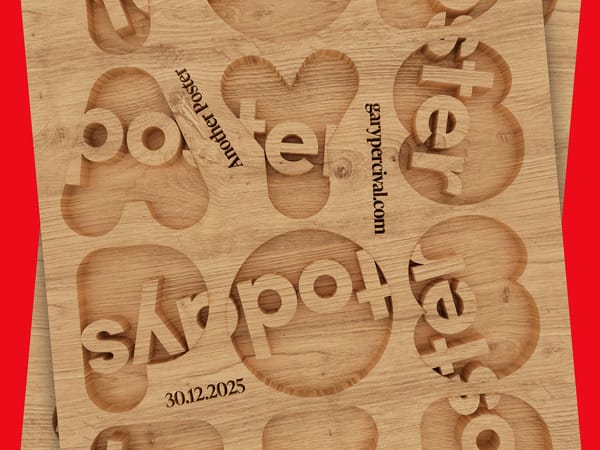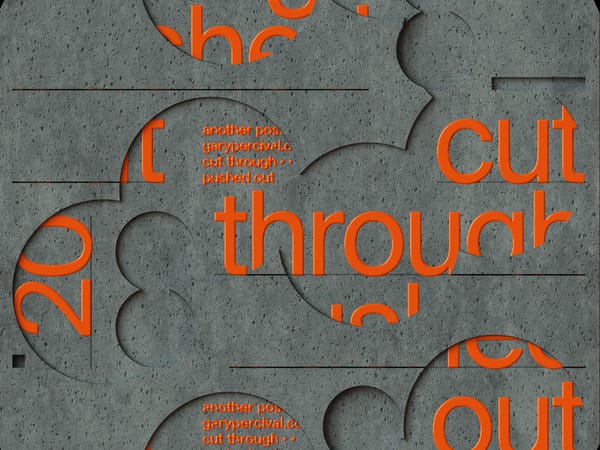How to use the Eisenhower Matrix to achieve more in your work
Are you feeling overwhelmed with all the things you need to do?

Are you feeling overwhelmed with all the things you need to do?
Are you struggling to find a way to prioritise and organise your work?
If so, then you need to check out the Eisenhower Matrix. Named after President Dwight D. Eisenhower, this handy tool can help you get more done in less time.
In this blog post, I'll explain what the Eisenhower Matrix is and how to use it effectively. So read on for some helpful tips!
What is the Eisenhower Matrix and what are its benefits for work productivity?
The Eisenhower Matrix is a tool for task prioritisation and management. It is named after Dwight D. Eisenhower, the 34th President of the United States, who is said to have used a similar tool to help him make decisions.
The Eisenhower Matrix has the following advantages for increasing work productivity:
- assisting in the identification and prioritisation of high-priority tasks
- avoiding distractions by identifying tasks that can be completed quickly or are not time-sensitive
- organising tasks according to priority and urgency so that they can be completed efficiently

How can the Eisenhower Matrix be used to achieve more in your work?
The Eisenhower Matrix can be used to achieve more in your work by helping you to prioritise and manage your tasks in a more efficient manner.
By identifying and focusing on high-priority tasks, you can prevent distractions and better utilise your time. Additionally, organising tasks by priority and urgency can help you to tackle them more effectively.
How to use the four quadrants of the matrix to organise your time and tasks
The Eisenhower Matrix can assist you in organising your time and tasks so that you can accomplish more in your work. The matrix is divided into four quadrants: urgent and important, not urgent but important, urgent but not important, and not urgent but not important.
You should prioritise tasks that are both urgent and important, as these are the ones that must be completed right away. Tasks that are not urgent but still important can be scheduled for a later date because they can wait until more time is available.
Tasks that are urgent but not critical should be delegated or eliminated, as they can be postponed without repercussions.
Finally, non-urgent and non-important tasks should be eliminated or delegated to someone else.
Using the Eisenhower Matrix, you can ensure that you prioritise the most important tasks and delegate or eliminate those that aren't as important. This will allow you to get more done at work and better manage your time.

Tips for staying productive in each quadrant of the matrix
In the Urgent and Important category, it's important to set deadlines for yourself and stick to them. Make sure you're also taking breaks, or you'll quickly burn out.
In the Important but Not Urgent category, it's important to have a plan and to stay organised. Make sure you're blocking off time in your calendar for the tasks in this category, and don't let anything else fill that time.
In the Urgent but Not Important category, it's important to learn how to say no. This is probably the most important category to delegate tasks to other people, or simply not do at all.
In the Not Urgent and Not Important categories, it's important to eliminate distractions. Turn off notifications on your phone and computer, and find an environment where you can focus on the task at hand.
Examples of how to apply the Eisenhower Matrix to specific work scenarios
The Eisenhower Matrix can be applied to a wide variety of freelance graphic design work scenarios.
Here are a few examples:
- Prioritise tasks: When you have a lot of freelance graphic design work to do, it can be tough to know where to start. The Eisenhower Matrix can help you to prioritise your tasks so that you can make the most impact.
- Stay on track: The Eisenhower Matrix can also help you to stay on track with your work. If you have a specific goal in mind, the matrix can help you to map out the steps you need to take to achieve it.
- Deal with distractions: Distractions are an inevitable part of freelance graphic design work. The Eisenhower Matrix can help you to deal with distractions by helping you to stay focused on your priorities.
- Make better use of your time: The Eisenhower Matrix can help you to make better use of your time by helping you to focus on the most important tasks. By prioritising your work, you can ensure that you are making the most impact with your time.

The importance of creating a daily routine that incorporates the Eisenhower Matrix
Including the Eisenhower Matrix in your daily routine can help you achieve more at work. The Eisenhower Matrix is a tool that can assist you in prioritising your tasks and ensuring that you are concentrating on the most important things.
When you incorporate the Eisenhower Matrix into your daily routine, you can ensure that you are making the best use of your time.
One advantage of using the Eisenhower Matrix is that it can assist you in avoiding distractions. When you know which tasks are most important, you can concentrate on them and avoid being distracted by less important tasks.
Using the Eisenhower Matrix can also help you stay organised and avoid overwhelm. By incorporating the Eisenhower Matrix into your daily routine, you will be able to better manage your time and achieve more in your work.
How to make necessary changes to your routine
Routines are crucial for all individuals, particularly for freelance graphic designers. When your work depends on clients who may be in different time zones, or when you have to juggle multiple tasks at once, it is essential to have a routine that keeps you organised and focused.
However, even the best routines can occasionally derail. Therefore, it is essential to be prepared to make adjustments as necessary.
Here are four suggestions for adjusting your freelance graphic design routine as needed:
- Set realistic daily and weekly objectives. Examine your goals if you find that your routine is no longer as effective as it once was. Are you attempting to complete too many tasks in too little time? Are your objectives unreasonable? Adapt them accordingly if so. Break down large projects into smaller, more manageable tasks, and be realistic about the amount of time you have each day to work on freelance projects.
- Take a break when necessary. There will be times when things do not go as planned, regardless of how well you have planned. When this occurs, it is necessary to take a break. Remove yourself briefly from your work and clear your mind. Take a stroll or read a book. After some time to relax, you will be able to return to your work with new perspectives and ideas.
- Streamline your process. Sometimes, the ineffectiveness of our routine is due to the fact that it is simply too complicated. If so, you should simplify your process. Break up your work into smaller, more manageable steps. This will help you stay on track and reduce the likelihood of becoming overwhelmed by the details.
- Be flexible. Remember that freelance graphic design is a highly creative field and that sometimes the best work is the result of being spontaneous and flexible. If your routine isn't working, don't be afraid to try something new. You may discover that the ideal solution is something you would have never considered if you had stuck to your old routine.

What are some common traps that people fall into when trying to use the Eisenhower Matrix, and how can you avoid them?
When trying to use the Eisenhower Matrix, people often fall into one of two traps: prioritising based on urgency rather than importance or focusing on too many things at once.
To avoid these traps, it's important to understand the key principles of the Eisenhower Matrix:
- Separate tasks into those that are urgent and important, those that are important but not urgent, and those that are neither urgent nor important.
- Prioritise tasks based on their importance, starting with the most important tasks first.
- Take action on tasks as soon as they are identified, rather than putting them off.
By following these guidelines, you can use the Eisenhower Matrix to effectively manage your time and achieve more in your work.
Are there any other tools or methods that can help me be more productive in my work?
Other tools or methods can assist freelance graphic designers in being more productive in their work. These include time management techniques such as timeboxing and the Pomodoro Technique, as well as productivity tools such as Trello and RescueTime, in addition to the Eisenhower Matrix.
The important thing is to find what works for you and stick with it, regardless of which technique or tool you use. You can easily increase your productivity and get more out of your work with a little extra effort.
Time management techniques such as timeboxing and the Pomodoro Technique can assist you in making the most of your time by dividing your work into manageable chunks and using a timer to keep you focused.
RescueTime and other productivity tools can help you track your time so you can see where you're spending the most time and make adjustments accordingly.
The important thing is to find what works for you and stay with it, no matter what techniques or tools you use. You can easily increase your productivity and get more out of your work with a little extra effort.
Read my post, Learn How The Pomodoro Technique Can Make You More Productive, to learn more about the Pomodoro technique.
Conclusion:
The Eisenhower Matrix is a great way to organise and prioritise your work. It can help you stay on track and focused on the most important tasks.
Have you tried using the matrix to manage your freelance graphic design work? What tips do you have for fellow freelancers? Let me know in the comments below.



